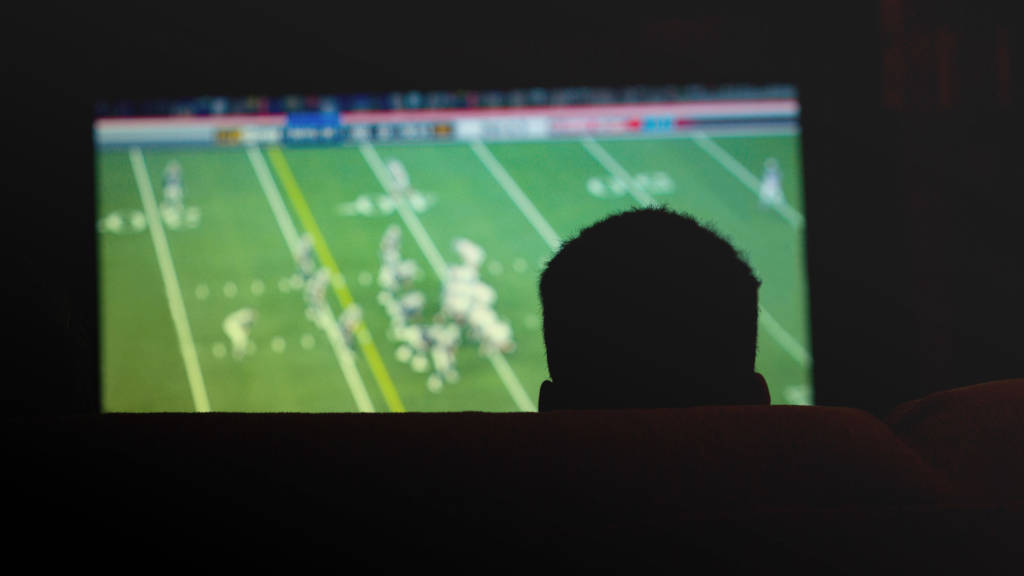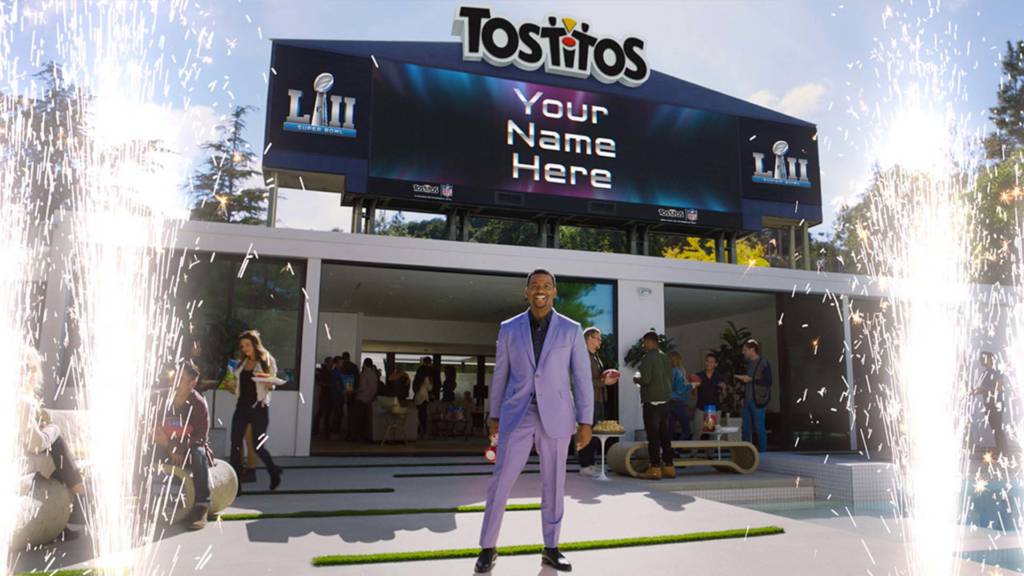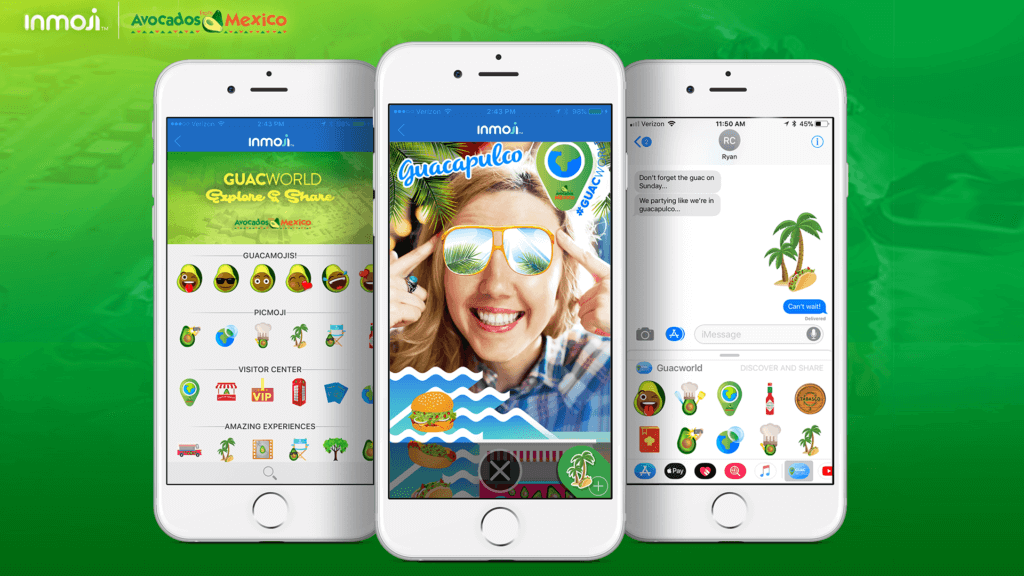To score the proverbial touchdown on Super Bowl Sunday, marketers are shifting their focus off of TV to win in conversations happening in the digital space.
The asking price for Super Bowl commercials has grown 75 percent in the last decade, reaching figures north of $5 million from networks. For brands that are not advertising on TV with hopes of reaching the over 100-million plus viewers slated to tune into the game, they can still have a relevant part of the conversation and win consumer sentiment with mobile, social and web strategies that have the potential to stick.
“Your phone is not your second screen—it’s your second self,” said Courtney McKlveen, head of US field sales for Oath, Yahoo’s parent company. “The Super Bowl is not just a game, it’s actually an entire day for marketers to reach consumers, and the second-screen experience that day is critically important for those who are watching the game.”
“You have to analyze the battlefield before building a second-screen strategy,” added Ivonne Kinser, head of digital marketing for Avocados From Mexico, which has had TV ads on the Super Bowl for four years. “We’ve realized that the Super Bowl is just a huge digital conversation. We don’t have the budgets that other advertisers do, so we have to really rely on creativity, influencers, technology and marketing to amplify our message.”
Some brands with bigger budgets are skipping the TV screen altogether. Tostitos is shifting toward a pure digital strategy with an online platform that creates individualized ads for consumers. “Super Bowl Ads for All” stars The Fresh Prince of Bel-Air actor Alfonso Ribeiro and taps into super Sunday party culture, providing personalized invitations for anyone hosting soirees.
“TV consumption has radically shifted over the past few years with viewers incorporating second-screen and sometimes even third-screen devices into the experience,” said Pat O’Toole, senior director of marketing for Frito-Lay North America. “It’s just as important to engage with our core audiences on those devices, especially when you’re looking to reach younger millennials—one of our primary targets for Tostitos.”
O’Toole said that since the Super Bowl is one of the biggest communal days of the year, they wanted to advance the dialogue and own the conversation as a brand before the grand game on the gridiron. It also made sense to take a pure digital approach because that’s where consumers are creating their invites on their quest to spending over a total of $14 billion for the sports holiday.
The marketing campaign is being paired with a Cantina-style experience in Minneapolis, the site of this year’s Super Bowl, where consumers can meet Ribeiro and use the space to create invites and interact with a slew of other brand activations from the likes of Doritos, Sleep Number, Bridgestone, Verizon, Target, US Bank and Polaris, just to name a few.
PepsiCo is also activating a three-episode digital content series with former NFL players that pits them in the kitchen, with the winning star having their dish featured at the Buffalo Wild Wings Menu at the Mall of America in Minnesota. The social-driven show was made in partnership with Vox Creative, Vox Media’s Eater and SB Nation.
“The Super Bowl continues to be a great platform to entertain consumers and deliver brand and product messages to a massive audience,” said Dean Evans, Hyundai’s chief marketing officer. “We welcome the creative challenge and the opportunity to test and hone our Super Bowl formula, which has found success the past several years. Being an NFL sponsor gives us the ability to truly integrate our program across TV, digital, social and on the ground in Minnesota.”
Despite TV’s widespread reach—especially for NFL games that still dominate the ratings cycle even with a dip in viewership—developing a second-screen strategy across several devices is essential for growing an audience. According to eMarketer, 185.8 million adults in the US will regularly use the internet on a second-screen device while watching TV this year, an increase of 4.5 percent from last year’s figure.
For Avocados From Mexico, Kinser will be operating on four pillars during their “GuacWorld” digital campaign: SEO, display media, developing social media experiences within platforms that will appeal to any demographic and a paid search campaign that is relevant not only to the Super Bowl, but for all brand-related terms, like recipes.
Her two goals for Super Bowl Sunday are to own the digital conversation on social media and amplify the 30-second TV spot by corralling millions of views for the ad. The brand will also produce a 60-second spot for digital with the same story.
“We’re an underdog, and people love underdog stories,” Kinser said, noting that a produce marque from a brandless industry joining the advertising fray creates intrigue and attracts conversation. “So we set the bar really high for ourselves.”
Avocados From Mexico also formed a partnership with Silicon Valley-start-up and emoji-focused company Inmoji to develop trackable branded icons. Visitors will be able to use Inmoji’s patent-pending tech with the interactive “Picmoji” feature, Kinser said, combining the selfie and the emoji for the first time and sharing it with their friends as a clickable icon.
“Emoji is the communication of the future,” said Kinser. “With the way it’s evolving, we wanted to take the trend of shareable and interactive emoji and use it in a fun way that increases our marketing. Tech innovation is critical to stay at the forefront of respective industries.”
Avocados From Mexico is also reactivating an evergreen Snapchat strategy for GuacWorld in certain universities around the country with a customized Super Bowl message. A national Snap filter would require a “significant investment” that was outside of their budget, Kinser said.
Super Bowl marketing dollars appear to be paying dividends. A joint study from Stanford and Humboldt University found that Big Game advertisers saw sustained post-game sales boosts and value that persists well after the confetti has fallen. A separate study from Standard Media Index says that ad sales revenues for the NFL are still up and growing year-over-year.
McKlveen said that building a mobile and multi-screen strategy that enhances experiences around the entire day—and not only the game—will help marketers “breakthrough” with their strategies, which is largely the reason why Pizza Hut is partnering with Oath and Yahoo for the second year in a row with Squares Pick’em, the classic game that’s evolving with a digital twist.
Zipporah Allen, vice president of marketing for Pizza Hut, called last year’s version of the game a “successful campaign,” with 70 percent of people playing a combined nine million minutes of the game specifically on a mobile device.
This year, the piemaker is pairing the game with video, native, display and mobile ads across Oath brands, as well as email and social marketing, to drive sign-ups for the experience. Pizza Hut is also pairing its marketing with a promotion that aims to drive new sign-ups to its loyalty program that launched last year. If the record for the fastest Super Bowl touchdown ever (14 seconds) is broken, all members who join prior to kickoff receive free pizza.
“Sports is a tried-and-true method for marketers to deliver fan experiences,” said McKlveen. “For marketers who are thinking about experiences for the entire day, the second-screen is no longer an afterthought. You have to show up as yourself and deliver consumers value and entertainment.”




